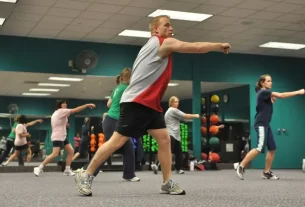Sudden cardiac death in an athlete is a shocking and devastating event. For this reason, the athlete’s assessment is necessary. There is great interest in finding ways to detect disorders associated with a high risk of sudden cardiac death prior to sports participation. This is what makes athlete assessment critical. The American Heart Association (AHA) and the European Society of Cardiology (ESC) have proposed guidelines for pre-participation assessment of individuals planning to begin or participating in competitive sport.
The difference between these two proposals is that the AHA guidelines recommend a pre-participation history and physical examination for general screening, but not the routine use of a resting 12-lead electrocardiogram (ECG). The justification for the AHA’s objection to universal ECG screening is based on the risk of false-positive results. They say this leads to anxiety for athletes and their families, and the need for further testing.
Furthermore, such a national screening program would have a substantial impact on feasibility and cost-effectiveness. This is due to the large population of athletes in the United States. The ESC guidelines, in contrast, include a standard 12-lead ECG. This is based on a national screening program that has been in place in Italy since 1982.
Pre-competition electrocardiogram
The attraction of adding an ECG to pre-participation assessment for sports lies in the non-invasive nature of the test and its ability to detect conditions associated with exercise-induced cardiac arrhythmias. In 2006, Corrado D et al. published a study from Italy which found that the addition of an ECG to pre-participation assessment resulted in an increase in the number of athletes excluded from competition for cardiomyopathy from 4.4% to 9.4%. This led to a lower incidence of sport-related sudden cardiac death.
However, studies conducted in the United States, mainly in Minnesota, show a relatively lower incidence of sudden death than that observed in other studies. The addition of the ECG to the pre-participation assessment does not seem to reduce the incidence of sudden cardiac death. For this reason, there is still debate today about whether to perform an ECG on all athletes in the pre-participation assessment.
Athlete’s assessment
Most children and young people who start a sporting activity do not undergo a proper pre-participation assessment. Therefore, it is not unusual for some of them to suffer a sudden cardiac death related to sport. Some cases occur during physical exercise at school. Children and young people who have significant heart disease since childhood will see their ability to participate in sport limited and will self-exclude themselves from it.
However, some heart diseases manifest later and others develop later, as is the case of hypertrophic cardiomyopathy, which is the most frequent cause of sudden cardiac death in young athletes. In most cases, the correct athlete’s assessment is made in young people who have already passed their adolescence. However, many of them had already performed intense exercise at a younger age.
The question therefore arises as to at what age should athlete’s assessment be carried out. Should it be included in nursery schools? On the other hand, cardiovascular diseases can appear after the initial medical assessment, so it would be necessary to carry out the assessment periodically; but how often? The issue becomes very complicated and difficult to resolve, since it requires the consumption of many health resources.
Case history
A young man in the United States died of sudden cardiac death during a sporting event, after having undergone a pre-competition assessment with a medical history and physical examination, and the diagnosis at autopsy was hypertrophic cardiomyopathy. The mother asked if it had been possible to diagnose the disease with an ECG. She was told that some alteration would probably have been seen that would have led to a more in-depth study, mainly an echocardiogram. This would have allowed the diagnosis to be made and the young man to be excluded from the competition.
Why didn’t they do it? the mother asked. Because the AHA does not recommend that all athletes have an ECG, as it gives false positive results. This would lead to anxiety for athletes and their families, and necessitate unnecessary testing. Naturally, the mother of the deceased young man did not understand the justification. Cases like this can be found in many parts of the world, as can be seen on the Parent Heart Watch website.
More evidence?
The problem is further complicated by the fact that there are cardiovascular abnormalities that cause sudden cardiac death and can go undetected on an ECG, such as an aortic aneurysm or a coronary anomaly. For this reason, some authors even recommend that all athletes undergo an echocardiogram. This would obviously involve greater consumption of health resources.
But should the sudden cardiac death of an athlete be linked to a financial issue? Can the parents of a young athlete who died of sudden cardiac death be justified as being due to a lack of money? No parent will find any comfort in these explanations, and all will emphasize the need for more tests to be carried out on children and young people who are going to play sports.
Most statistics on sudden cardiac death in athletes only include young people over 14 years of age. In fact, some series only consider elite athletes, professionals or high-level amateurs. These statistics usually give very low incidences of sudden cardiac death, less than 1 per 100,000 athletes.
However, they do not include cases of sudden cardiac death that occur in children while exercising at school or at play, so they cannot be considered complete and accurate statistics. Cardiovascular disease is the second leading cause of death from medical pathology in children and adolescents. In the United States, one young athlete dies every 3 days due to cardiovascular disease. The incidence of sudden cardiac death is therefore higher than the statistics published in most scientific studies.
It is therefore necessary to conduct comprehensive records, including all cases of sport-related sudden cardiac death, regardless of the age of the athlete and the place and time at which they occur. If these statistics confirm that the incidence of sport-related sudden cardiac death is much higher than currently recognized in the scientific world, more in-depth pre-competition assessments may be justified, including ECG and even echocardiogram and stress testing.



